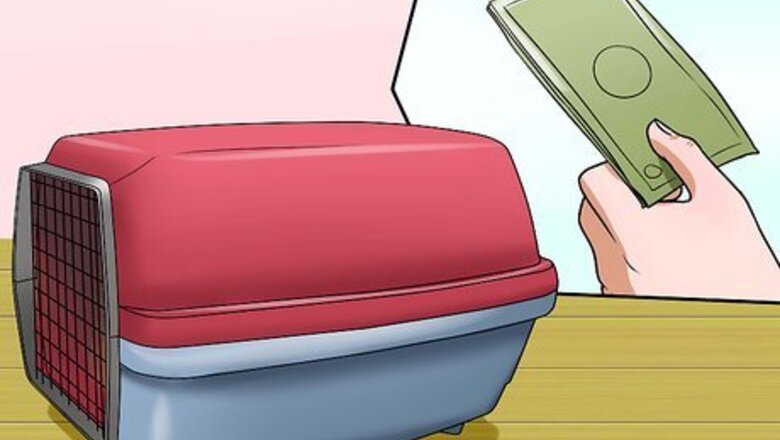
views
X
Research source
However, taking your cat to the vet can be stressful. Whether they need a routine check-up, a minor surgical procedure, or an extended stay, nerves and anxiety can overwhelm your kitty. If it is time to take them to the vet, here are some good methods to help ease stress and turn a possibly negative experience into a positive one.
Using a Cat Carrier
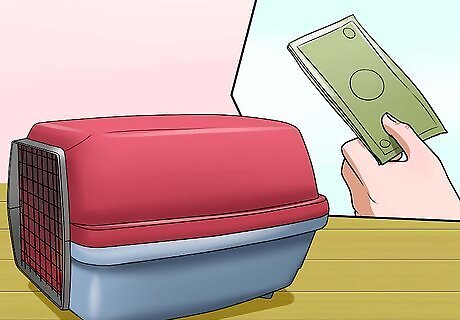
Obtain a cat carrier. Both hard and soft cat carriers will allow you to safely carry your cat to and from the vet. The harder ones are better for vehicle transport. Training your cat to enter the carrier could take a few hours or a few weeks. In order to have sufficient time to test it out before use, try to obtain a carrier 1-4 weeks prior to the appointment. If you already have a carrier, make sure that your cat can still fit inside of it. If you do not have a carrier, one can be purchased at your local pet store, department store, or online. As an alternative, you could ask to borrow a carrier from a friend or possibly find one at your local thrift store, but be sure to clean and dry it thoroughly before use. A little vinegar added to mild soap and water will help eliminate odors.
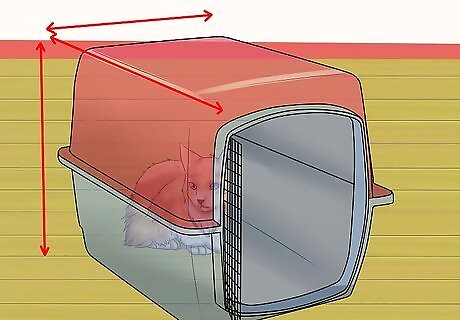
Make sure the carrier is the correct size. Carriers should be large enough for your cat to turn all the way around in it. If you choose to purchase a carrier online, do so far in advance of the appointment to ensure that you receive the carrier in time to habituate your cat to it.
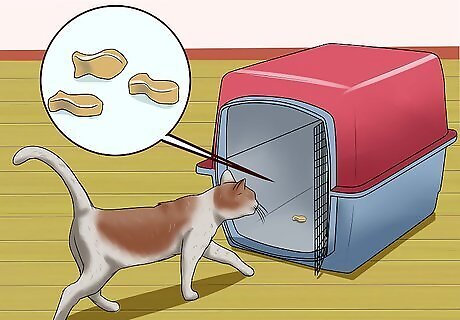
Train your cat to enter the carrier. It is likely that your cat will turn tail when they see the carrier, so don't pull it out from storage right before leaving for the appointment. This could make them remember the last time you went to the vet, if that experience was traumatizing. Use the carrier at nap and play time. This will help eliminate negative associations your cat might have with the carrier. To get them used to the carrier (again), first line it with shredded newspapers and a couple of small towels or large strips of fabric that contain a scent familiar to your cat. Put cat treats in and around the carrier to lure your kitty inside. It might take some time for your cat to enter the carrier, so add fresh treats when needed.
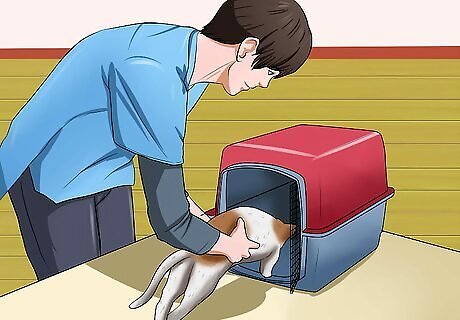
Place your cat in the carrier. Once they seem comfortable in and around the carrier, you can put them in it. Quietly close the carrier door, and speak soothingly to them. Be gentle when placing your cat in the carrier. If they still refuse, do not force them in. Instead, give them more time to get used to it.
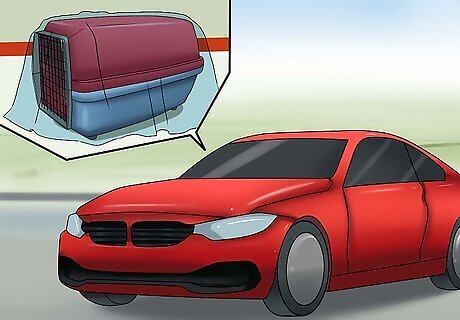
Do a "dry run." Once inside the carrier, taking your cat on short drives through the neighborhood could help ease your cat's anxiety. Gently carry your cat to your vehicle, or to the train, subway, or bus stop. On public transportation, use a large towel to cover the carrier, so that your cat will be less anxious. Place the carrier on a seat. If you are driving, buckle the carrier in for safety. Speak soothingly to your cat, or play soft music during the drive. Lengthen the trip each time, until the day of the appointment. Be sure to bring plastic bags, mild disinfecting wipes, and small towels for cleanup in case they have an accident during the trip.
Transporting Your Cat to the Vet

Prepare your cat for the visit. Before leaving, make sure that your cat is ready. Groom them by brushing their fur and, if need be, clip their front claws so that they do not scratch you or the vet.

Bring necessary items. To help your cat stay clean and comfortable, be prepared. Pack plastic bags for waste disposal, and mild disinfecting wipes and small towels for cleanup. Pack a large towel to cover the carrier while among crowds or in the waiting room. Pack your cat's favorite treats and some of their favorite toys. You can even place one inside the carrier to help them feel safe. If you are driving to the vet's office, obey all traffic laws, maintain the speed limit, and avoid sharp turns. If the trip is long, make sure your cat has an area inside where they can relieve themself. The shredded newspapers work well as litter while you're on the road. Bring extra newspaper.

Gently carry your cat into the office. Cover the carrier, or keep the carrier covered, with the towel once you are in the waiting room. Do not take your cat out of the carrier unless it needs to be cleaned. Other animals in the waiting room might incite your cat to pounce at or scratch them. If your cat seems happy without the towel, then do not use it but keep in on hand, just in case.
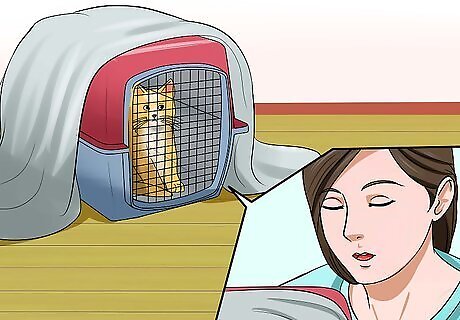
Keep your cat comfortable during visit. Once your cat survives the waiting room and is called in to the see the vet, it is important that you continue to soothe any anxiety they may feel. Continue to speak soothingly to them, especially if the carrier is covered. Your cat needs to know that you are close. Ask the vet for the best way to remove your cat from the carrier. Once inside, they might be just as afraid to come out as she was to go in.
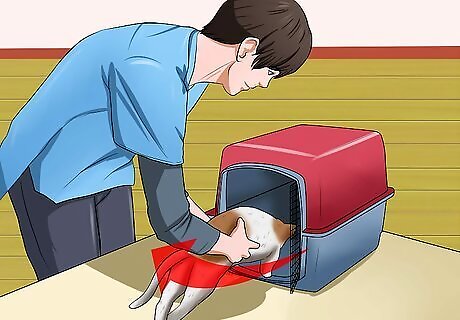
Remove the cat from the carrier. Very gently and while speaking soothingly, reach inside the carrier to remove your cat. Set them on the table, if you are instructed do so. Follow the vet's instructions for how to handle your cat. If asked to hold them down firmly, do so without undue pressure. If you are unsure how to do this, ask the vet or vet assistant (if present) for help.
Taking Your Cat Home
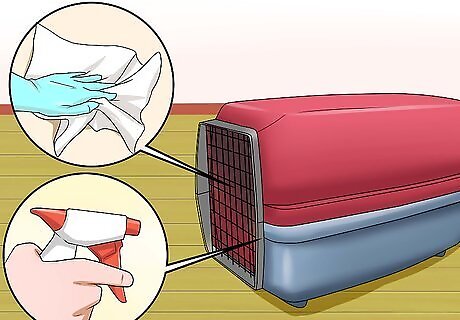
Prepare to go home. Depending on the type of appointment your cat had, or if you are returning to the vet after leaving them there for surgery or observation, taking your cat home can create another anxious experience. Make sure the carrier is clean before leaving. Clean it, if necessary, replacing the newspaper and towels.

Show your cat how happy you are with their good behavior. Give your cat a treat for being a good patient and shower them with affection before placing them back into the carrier. Before leaving the office, be sure to confirm when they might need to return for a checkup or follow-up appointment.

Go to your car, station, or stop. Cover the carrier again with the large towel, if your cat seems nervous. Gently set the carrier in place. If returning in a car, buckle up the carrier again.
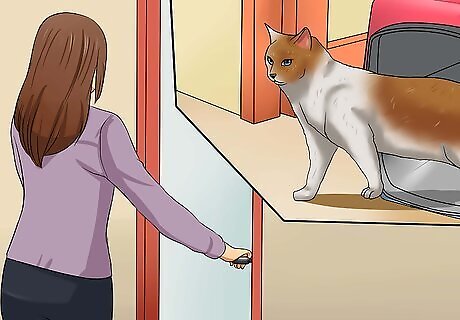
Try not make any unnecessary stops on the way home. Your cat will be ready to feel at home again. Once home, set the carrier down and gently open the door. Do not force your cat out; they will exit on their own when they are ready.
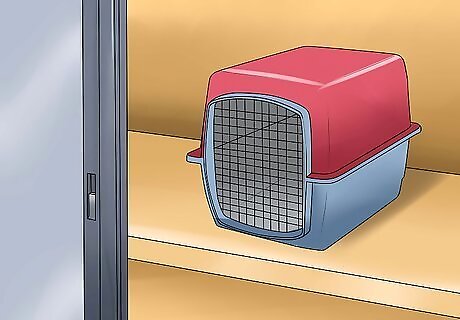
Store the Carrier. Clean and dry the carrier thoroughly and store it in a place where it will not get damaged (or return to the person from whom it was borrowed). Many carriers can be used for plane travel, running errands, and when visiting friends or family. Clean, dry towels and newspapers can be stored in the carrier for later use. Regular use of the carrier will keep your cat feeling comfortable with it.












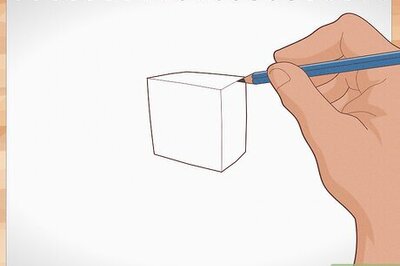






Comments
0 comment